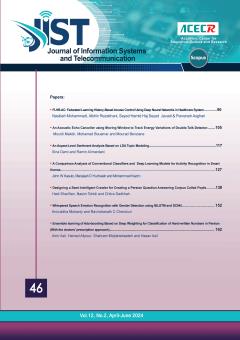Nowadays, online social networks have a great impact on people’s life and how they interact. News, sentiment, rumors, and fashion, like contagious diseases, are propagated through online social networks. When information is transmitted from one person to another in a so
More
Nowadays, online social networks have a great impact on people’s life and how they interact. News, sentiment, rumors, and fashion, like contagious diseases, are propagated through online social networks. When information is transmitted from one person to another in a social network, a diffusion process occurs. Each node of a network that participates in the diffusion process leaves some effects on this process, such as its transmission time. In most cases, despite the visibility of such effects of diffusion process, the structure of the network is unknown. Knowing the structure of a social network is essential for many research studies such as: such as community detection, expert finding, influence maximization, information diffusion, sentiment propagation, immunization against rumors, etc. Hence, inferring diffusion network and studying the behavior of the inferred network are considered to be important issues in social network researches. In recent years, various methods have been proposed for inferring a diffusion network. A wide range of proposed models, named parametric models, assume that the pattern of the propagation process follows a particular distribution. What's happening in the real world is very complicated and cannot easily be modeled with parametric models. Also, the models provided for large volumes of data do not have the required performance due to their high execution time. However, in this article, a nonparametric model is proposed that infers the underlying diffusion network. In the proposed model, all potential edges between the network nodes are identified using a similarity-based link prediction method. Then, a fast algorithm for graph pruning is used to reduce the number of edges. The proposed algorithm uses the transitive influence principle in social networks. The time complexity order of the proposed method is O(n3). This method was evaluated for both synthesized and real datasets. Comparison of the proposed method with state-of-the-art on different network types and various models of information cascades show that the model performs better precision and decreases the execution time too.
Manuscript profile


